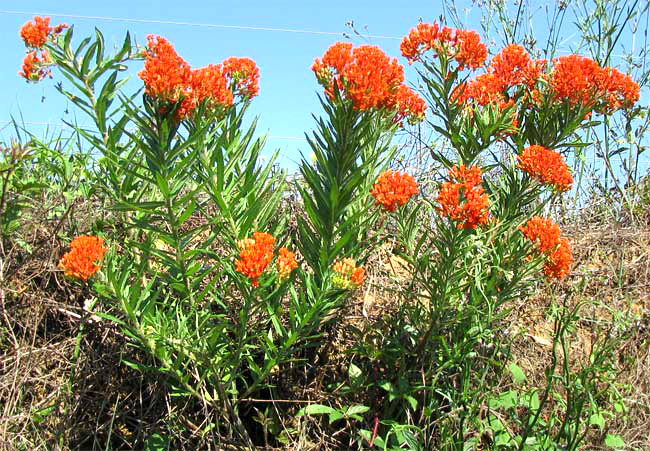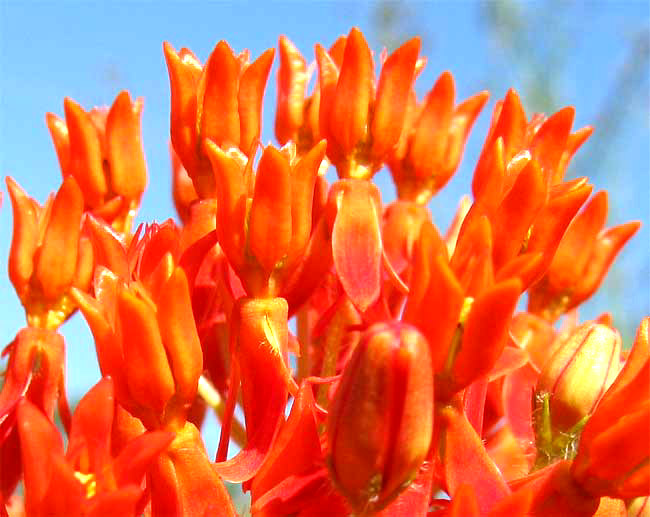Excerpts from Jim Conrad's
Naturalist Newsletter


from the the June 30, 2008 Newsletter, issued from the forest near Natchez, Mississippi; elevation ~400ft (120m), ~N31.47°, ~W91.29°:
BUTTERFLY-WEED ABLAZE
Several plants go by the name of Butterfly-weed but probably the most famous and most deserving is shown at the top above.
That's ASCLEPIAS TUBEROSA, one of the milkweeds, and it also goes by such English names as Orange Milkweed, Pleurisy-root and Chigger-flower. A flower close-up is shown second from the top above.
In the close-up you can see that the flowers have a very unusual shape, though their form is typical of the milkweeds. You might enjoy looking over my Milkweed Flower Structure page at http://www.backyardnature.net/fl_milkw.htm.
When I was a kid this species was much more commonly seen along roadsides than now. The two main reasons are: 1) people digging up the plants to replant around their own homes, where they nearly always die, and; 2) habitat destruction such as mowing and herbicide use along roadsides. The species specializes in dry soil in open places, and is distributed from Florida to Arizona north to Colorado and southern Ontario.
After being for so long among people who every day take advantage of plant medicinal uses, when I saw this beautiful population my first impulse was to ask around to see what people used it for. But of course no one here uses medicinal plants and the best I could do was to look it up on the Internet.
There I find that in the U. S. Pharmacopeia of the 1800s Butterfly-root's root was reported as widely used for lung problems such as asthma and bronchitis, made into a tea or sometimes eaten raw. Large doses of the root were sometimes used as a purgative and sometimes the root was applied to sores. Also there was a warning that the plant contains cardiac glycosides that are toxic in large amounts.
What a thing that our culture has lost so much of this information, yet what luck that the information still exists and is easily accessible. The main problem is that many sources tell us that Butterfly-weed can be used for asthma and bronchitis, but hardly anywhere is there generally accessible information on how the plant is to be prepared, what it should be combined with for best effect, and what concentration of the end product is safe and efficacious. Probably more than anything the lawsuit-mad feature of our society precludes such information being made generally available.
POSTSCRIPT: A few days after I took the picture, someone dug up the whole population, which by now surely is dead. It's amazing that this gorgeous, generous, free-to-look-at roadside population lasted as long as it did.